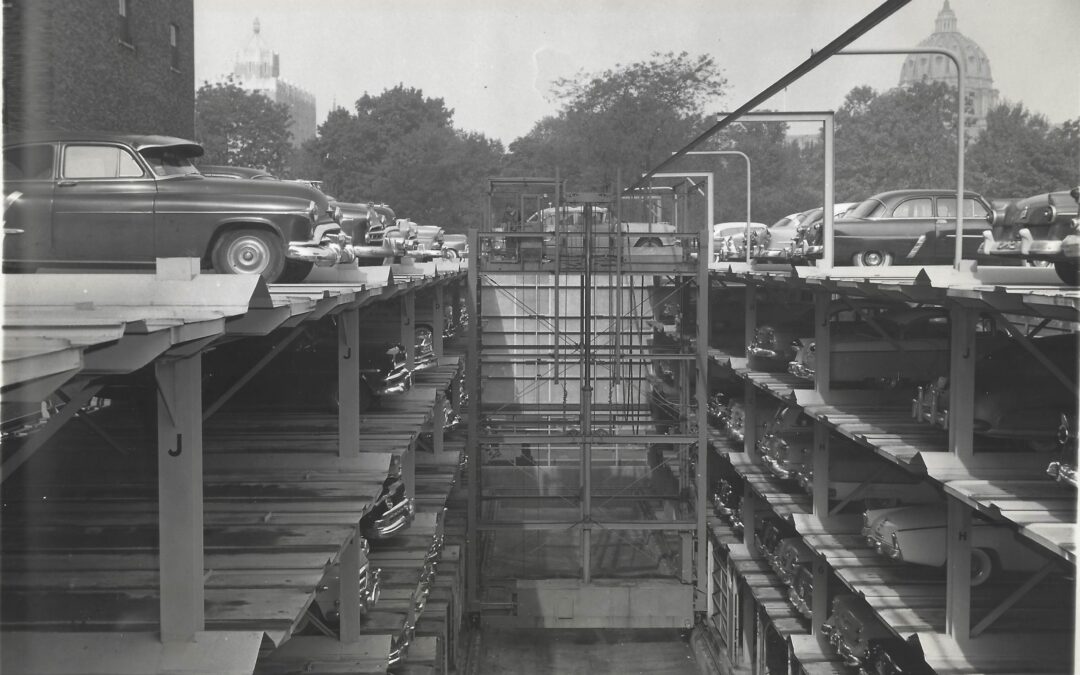The self-supporting Pigeon Hole Parking structures seemed like a good idea at the time. But cars did get trapped, and the format was a short-lived endeavor

The free-standing Pigeon Hole Parking structure uses an elevator to raise the car, then slide it along the row, and insert it into a space in the steel frame.
The deadly collapse of the four-story garage in Lower Manhattan Tuesday reminded me of this 1955 photo of the so-called Pigeon Hole Parking system.
I could find no reports of motorists losing lives in this once creative format to help expand parking space in metropolitan areas, but cars did get trapped, and the format was a short-lived endeavor.
According to a report in the Spokesman-Review in Spokane, Wash., brothers Vaughn and Leo Sanders came up with the idea for a robotic parking valet. They were loggers who also ran a silver mine and a lumber mill in Northport, near the Canadian border. Leo came up with the idea of robotic parking while operating a forklift at the mill.
After serving in World War II, the brothers founded Pigeon Hole Parking in 1947, wrote Jesse Tinsley in his 2014 report for the Spokesman-Review. “They patented a machine that would lift a car, slide it down the row and poke it into a space in a steel frame. No building with an elevator is required, just the space.
Cost-Effective Parking System?
The business plan for Pigeon Hole Parking seemed cost-effective. One or two people could run the entire operation. The Sanderses claimed that spaces in a concrete structure cost $1,200 each versus $300 for a Pigeon Hole space.
The brothers began building units for Los Angeles, Phoenix, New York, Chicago, and other urban areas. Cities in Europe and South America, which had narrow streets, expressed interest in the concept. Eventually, Spokane, Wash., would have four Pigeon Hole machines.
There were other parking machines on the market, but few were as popular as the Spokane original.
A Pigeon Hole Parking structure could store three to five times as many cars as a surface lot. The company went public in 1951. Over the years, Vaughn and Leo Sanders fought off takeover attempts by their board and stockholders. The company also sued other companies, some run by former Pigeon Hole employees, for patent infringement, wrote Tinsley.
Sales slowed after several years, Vaughn Sanders said, because financing new structures was difficult. A more likely reason was that the machinery often broke down, trapping cars for days while repairs were made. And the machinery couldn’t handle rapid surges in traffic.
Pigeon Hole Parking went out of business around 1971.
The photo with this story shows a 1955 Pigeon Hole structure in Harrisburg, Pa. The open-air garage was connected to an office building, according to the caption information with the image.
How many cars in the pigeon holes can you ID? I like the Studebaker with white-walls. And is that a 1955 Packard Clipper?
Look closely in the background for the Pennsylvania State Capitol.


